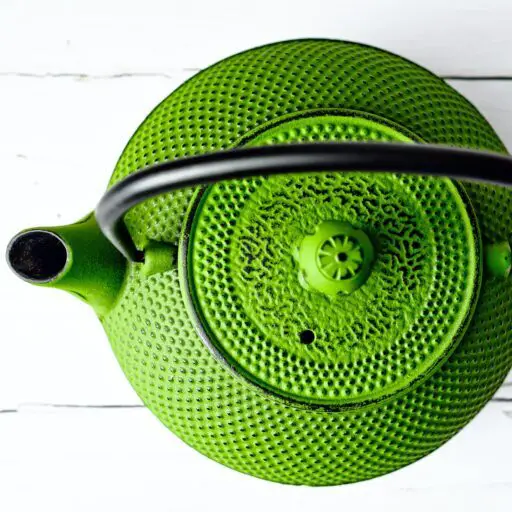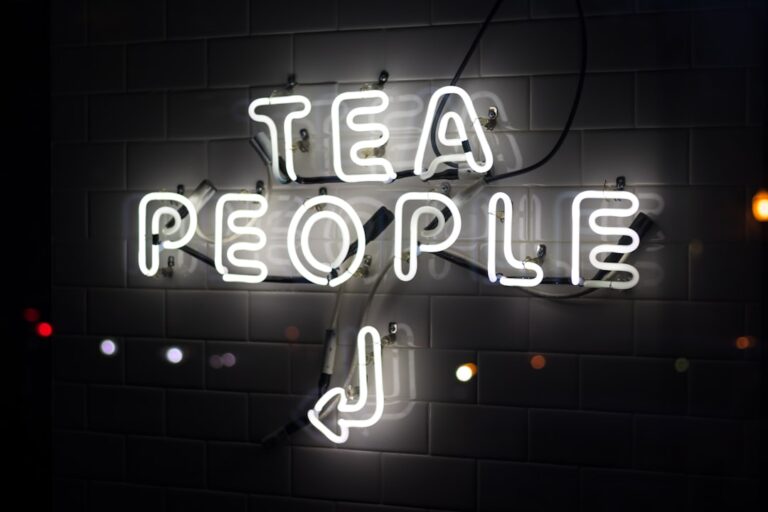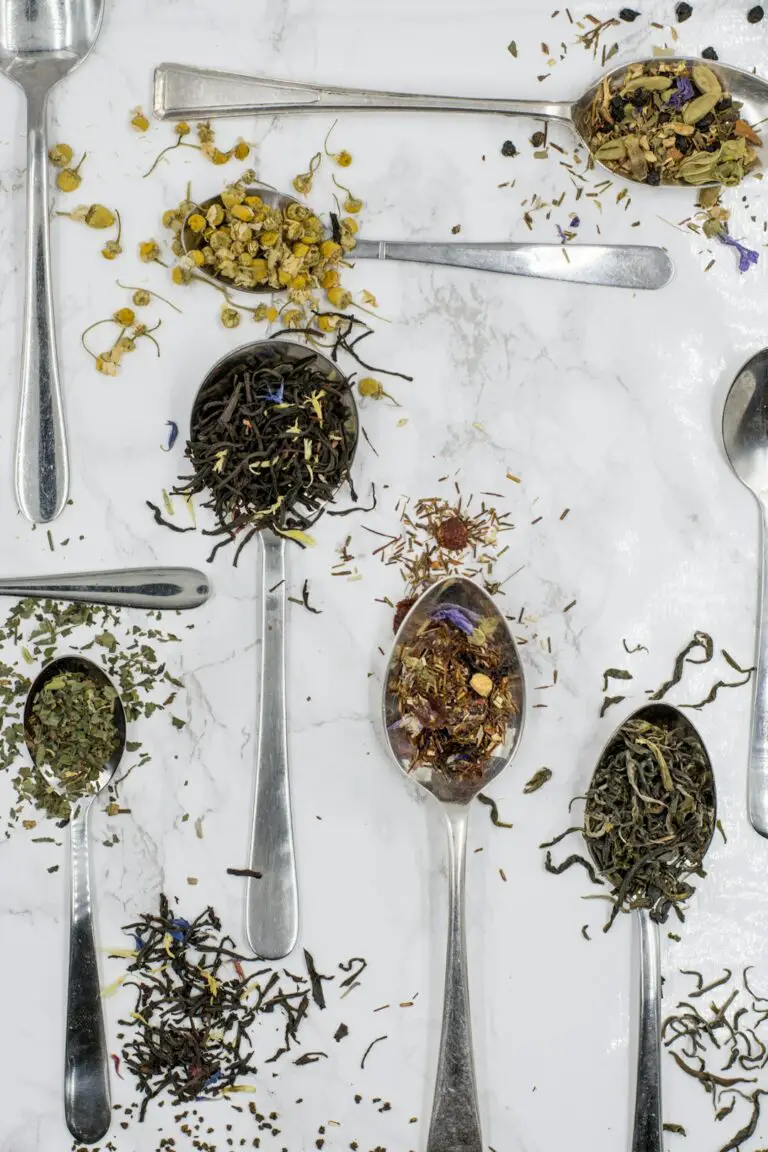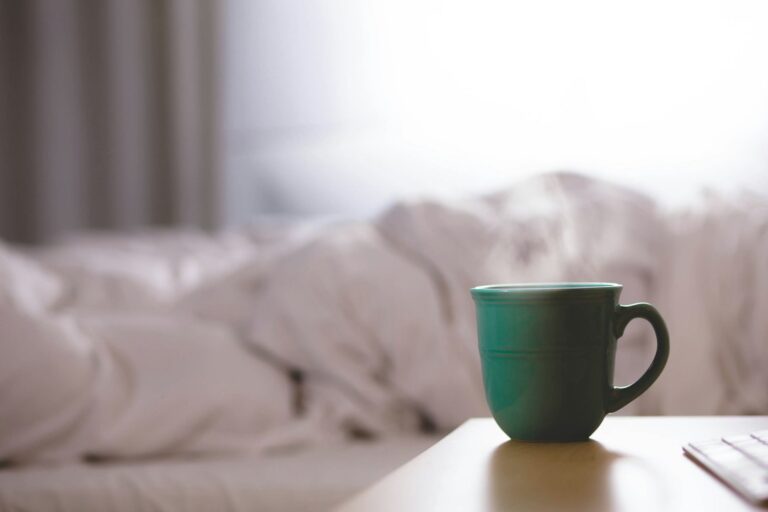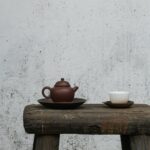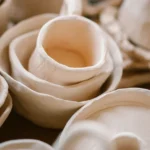Support our educational content for free when you purchase through links on our site. Learn more
What Is a High End Tea? Discover the Secrets of Luxury Leaves 🍃
Have you ever wondered what truly sets a high-end tea apart from your everyday brew? Is it the price, the packaging, or something far more subtle and enchanting? At Tea Brands™, we’ve spent countless hours tasting, researching, and savoring the finest teas from around the globe to unravel the mystery behind luxury tea. Spoiler alert: it’s a fascinating blend of geography, craftsmanship, and tradition that transforms humble leaves into a sensory masterpiece.
In this article, we’ll take you on a flavorful journey—from the ancient origins of premium teas to the precise art of brewing them perfectly. Curious about which teas top the luxury charts or how to spot authentic high-end leaves? We’ve got you covered with expert tips, brand spotlights, and insider secrets that will elevate your tea game forever. Ready to sip like royalty? Let’s dive in!
Key Takeaways
- High-end tea is defined by quality, rarity, and expert craftsmanship, not just price or fancy packaging.
- The origin, harvest season, and processing methods deeply influence the flavor and aroma of luxury teas.
- Popular premium teas include Darjeeling First Flush, Gyokuro, Silver Needle, and Tieguanyin—each with unique profiles.
- Proper brewing techniques and storage are essential to unlock and preserve the full potential of high-end teas.
- Trusted brands like Tea Forté, Ippodo, Harney & Sons, and The Rare Tea Company consistently deliver authentic luxury experiences.
Curious to explore the world’s most prestigious teas and learn how to brew them like a pro? Keep reading—we promise your next cup will never be the same!
Table of Contents
- ⚡️ Quick Tips and Facts About High-End Tea
- 🌱 The Art and History of High-End Tea: From Leaf to Luxury
- 🍃 What Defines a High-End Tea? Key Characteristics and Quality Markers
- 🥇 Top 10 Most Prestigious High-End Tea Varieties and Their Origins
- 🌿 Exploring Tea Types: Black, Green, White, Oolong, and Beyond in Luxury Tea
- 🍵 The Role of Terroir and Craftsmanship in Premium Tea Production
- 🛍️ How to Spot Authentic High-End Tea: Packaging, Certifications, and Brands
- ☕ Brewing the Best: Expert Tips for Unlocking the Full Potential of Luxury Tea
- 🎁 High-End Tea Gift Sets and Presentation Boxes: Impress Your Tea-Loving Friends
- 🌟 Bestselling High-End Tea Brands and Collections to Try in 2024
- 🧳 Tea Travel and Storage: Keeping Your Premium Leaves Fresh and Flavorful
- 💡 High-End Tea and Wellness: Exploring Health Benefits and Rituals
- 🧪 Understanding Caffeine Levels and Certifications in Luxury Tea
- 🥄 Pairing High-End Tea with Food: Culinary Adventures and Flavor Matches
- 🛒 Where to Buy High-End Tea: Trusted Retailers, Online Shops, and Subscription Services
- 🔍 Common Myths and Misconceptions About High-End Tea Debunked
- 🎉 Hosting a High-End Tea Tasting Party: Tips, Themes, and Must-Have Accessories
- 📚 Recommended Reading and Resources for Tea Enthusiasts
- 🔗 Useful Links to Explore More About Luxury Tea
- 📝 Conclusion: Elevate Your Tea Experience with High-End Selections
- 📖 Reference Links and Sources
⚡️ Quick Tips and Facts About High-End Tea
Welcome to the world of high-end tea, where every sip is a journey through centuries of craftsmanship, terroir, and artistry. At Tea Brands™, our expert tasters have uncovered some quick, essential nuggets to get you steeped in luxury tea knowledge before diving deeper.
- High-end tea is defined by quality, rarity, and craftsmanship — not just price.
- The best teas often come from single estates or small farms with meticulous hand-picking.
- Look for whole leaves, not dust or fannings, for premium flavor and aroma.
- Proper storage in airtight, light-proof containers preserves freshness and complexity.
- Brewing temperature and steeping time are crucial to unlock the full flavor profile.
- Popular high-end tea types include Darjeeling First Flush, Gyokuro, Silver Needle, and Tieguanyin.
- Certifications like Organic, Fair Trade, and Rainforest Alliance can indicate ethical sourcing.
- Packaging often reflects quality—luxury teas come in elegant tins, boxes, or hand-crafted pouches.
For more on the world’s finest teas, check out our best tea brands in the world guide.
🌱 The Art and History of High-End Tea: From Leaf to Luxury

Tea is not just a beverage; it’s a living tradition that has evolved over millennia. The story of high-end tea is a tale of geography, culture, and human dedication.
Origins of Luxury Tea
- The earliest teas were prized in ancient China, where imperial courts demanded the finest leaves.
- The Silk Road and later maritime trade routes spread tea to Europe and beyond, igniting a global passion.
- Regions like Darjeeling in India, Uji in Japan, and Wuyi Mountains in China became synonymous with premium teas.
Craftsmanship Through the Ages
- Hand-plucking only the youngest buds and top leaves is a hallmark of high-end tea production.
- Traditional processing methods—like pan-firing, sun-drying, or slow oxidation—preserve delicate flavors.
- Modern luxury tea makers blend ancient techniques with scientific precision to ensure consistency and excellence.
Why History Matters
Understanding tea’s rich past helps us appreciate the nuances of terroir, varietals, and processing that make high-end tea so special. It’s not just about taste; it’s about heritage in your cup.
🍃 What Defines a High-End Tea? Key Characteristics and Quality Markers
So, what exactly makes a tea “high-end”? It’s more than fancy packaging or a lofty price tag. Here’s what our Tea Brands™ experts look for:
1. Leaf Quality and Appearance
- Whole, unbroken leaves with visible buds indicate careful harvesting.
- Leaves should be uniform in size and color, often with a silvery or golden hue for white and green teas.
- Absence of stems, dust, and fannings is a must.
2. Aroma and Flavor Complexity
- High-end teas boast multi-layered aromas—floral, fruity, vegetal, or smoky notes that evolve as you sip.
- The flavor should be balanced, smooth, and lingering, without bitterness or astringency.
3. Origin and Terroir
- Single-origin teas from renowned estates often command higher quality due to unique soil, climate, and altitude.
- Look for specific harvest seasons, like Darjeeling’s coveted First Flush or Japanese Gyokuro’s shade-grown leaves.
4. Processing and Craftsmanship
- Traditional, labor-intensive methods like hand-rolling or slow oxidation enhance flavor depth.
- Certifications such as organic or fair trade can signal ethical and sustainable practices.
5. Packaging and Freshness
- Airtight, light-proof containers preserve freshness and protect delicate aromas.
- Luxury teas often come in handcrafted tins, elegant boxes, or resealable pouches.
🥇 Top 10 Most Prestigious High-End Tea Varieties and Their Origins
Ready to meet the crème de la crème? Here’s our curated list of the world’s most celebrated luxury teas, each with a story as rich as its flavor.
| Rank | Tea Variety | Origin | Key Characteristics | Notable Brands |
|---|---|---|---|---|
| 1 | Darjeeling First Flush | India (Darjeeling) | Floral, brisk, light golden liquor | Makaibari, Castleton |
| 2 | Gyokuro | Japan (Uji) | Sweet, umami-rich, shade-grown green tea | Ippodo, Marukyu-Koyamaen |
| 3 | Silver Needle (Baihao Yinzhen) | China (Fujian) | Delicate, sweet, silvery white buds | Teavana, Verdant Tea |
| 4 | Tieguanyin (Iron Goddess) | China (Anxi) | Floral, creamy, lightly roasted oolong | Ten Ren, Wuyi Tea |
| 5 | Longjing (Dragon Well) | China (Hangzhou) | Nutty, vegetal, pan-fired green tea | Dragon Well Tea Co., Teavivre |
| 6 | Assam Golden Tips | India (Assam) | Malty, robust, golden-tipped black tea | Goodricke, Twinings |
| 7 | Pu-erh (Aged) | China (Yunnan) | Earthy, mellow, fermented tea | Menghai, Dayi |
| 8 | Yellow Gold Tea | China (Hunan) | Rare, mellow, yellow tea with sweet notes | Rare Tea Company |
| 9 | White Peony (Bai Mudan) | China (Fujian) | Floral, fresh, slightly fruity white tea | The Tea Spot, Harney & Sons |
| 10 | Silver Needle White Tea | China (Fujian) | Delicate, sweet, high-quality white tea | Teavana, The Republic of Tea |
Each of these teas is a masterpiece in its own right, offering a unique taste experience shaped by geography, season, and tradition.
🌿 Exploring Tea Types: Black, Green, White, Oolong, and Beyond in Luxury Tea
High-end tea isn’t just one style—it spans the full spectrum of tea types, each with its own luxury champions.
Black Tea: Bold and Complex
- Examples: Darjeeling First Flush, Assam Golden Tips, Keemun
- Flavor: Malty, fruity, sometimes smoky
- Brewing tip: Use near-boiling water (95-100°C) for 3-5 minutes.
Green Tea: Fresh and Umami-Rich
- Examples: Gyokuro, Longjing, Sencha
- Flavor: Vegetal, sweet, sometimes nutty
- Brewing tip: Lower temperature (60-80°C) and shorter steep (1-3 minutes).
White Tea: Delicate and Floral
- Examples: Silver Needle, White Peony
- Flavor: Light, sweet, floral
- Brewing tip: Use cooler water (70-80°C) and steep longer (4-5 minutes).
Oolong Tea: Floral to Roasted Spectrum
- Examples: Tieguanyin, Da Hong Pao
- Flavor: Complex, creamy, sometimes smoky
- Brewing tip: Multiple infusions with water around 85-95°C.
Beyond Traditional: Pu-erh, Yellow, and Specialty Blends
- Pu-erh: Earthy, aged, fermented teas prized for depth.
- Yellow Tea: Rare, mellow, with a subtle sweetness.
- Specialty Blends: Luxury brands like Tea Forté create artful blends with rare ingredients.
Explore more about these types in our Tea Brand Guides and Specialty Blends.
🍵 The Role of Terroir and Craftsmanship in Premium Tea Production
Ever wondered why two teas from the same plant can taste worlds apart? The answer lies in terroir—the unique combination of soil, climate, altitude, and farming practices.
Terroir’s Influence
- Soil Composition: Mineral-rich soils impart subtle flavor notes.
- Altitude: Higher elevations often produce slower-growing leaves with concentrated flavors.
- Climate: Temperature, rainfall, and sunlight shape leaf chemistry.
Craftsmanship Matters
- Hand-Picking: Only the youngest leaves and buds are selected for premium teas.
- Processing: Techniques like rolling, oxidizing, and drying are done with precision to preserve flavor.
- Artisanal Touch: Some teas are aged or fermented to develop complexity, such as Pu-erh.
Our tasters have traveled to estates like Makaibari in Darjeeling and Uji in Japan to witness these traditions firsthand—each cup tells a story of place and passion.
🛍️ How to Spot Authentic High-End Tea: Packaging, Certifications, and Brands
Navigating the tea aisle can be overwhelming. Here’s how to separate the gems from the gimmicks.
Packaging Clues
- Opaque, airtight containers protect against light and moisture.
- Resealable pouches or tins are signs of freshness preservation.
- Elegant design often signals a premium product but beware of style over substance.
Certifications to Trust
- Organic: No synthetic pesticides or fertilizers.
- Fair Trade: Ethical labor practices.
- Rainforest Alliance: Sustainable farming and biodiversity protection.
Trusted Brands to Explore
- Teavana: Known for luxury blends and elegant packaging.
- Harney & Sons: Classic, high-quality teas with a wide range of premium options.
- The Rare Tea Company: Specialists in single-estate, rare teas.
- Ippodo Tea Co.: Renowned for authentic Japanese green teas.
For a deep dive into brand quality, visit our Tea Brand Spotlights.
☕ Brewing the Best: Expert Tips for Unlocking the Full Potential of Luxury Tea
Even the finest tea can fall flat if brewed incorrectly. Here’s how to brew like a pro.
Step-by-Step Brewing Guide
- Use fresh, filtered water—avoid distilled or heavily chlorinated water.
- Preheat your teapot or cup to maintain temperature.
- Measure tea leaves carefully—generally 2-3 grams per 8 oz water.
- Mind your water temperature:
- Green and white teas: 60-80°C (140-176°F)
- Oolong teas: 85-95°C (185-203°F)
- Black and Pu-erh teas: 95-100°C (203-212°F)
- Steep for the right time:
- Green/white: 2-4 minutes
- Oolong: 3-5 minutes, multiple infusions possible
- Black: 3-5 minutes
- Remove leaves promptly to avoid bitterness.
Pro Tips from Tea Brands™ Tasters
- Use a glass or porcelain teapot to appreciate color and aroma.
- Experiment with multiple infusions—many high-end teas reveal new notes with each steep.
- For iced tea or cold brew, use loose leaf teas specifically suited for cold extraction.
Check out the featured video for a charming guide on authentic British Afternoon Tea etiquette and brewing!
🎁 High-End Tea Gift Sets and Presentation Boxes: Impress Your Tea-Loving Friends
Nothing says “I care” like gifting a curated collection of luxury teas. Here’s what to look for:
Popular Gift Set Types
- Assortment Boxes: A variety of teas to sample different styles.
- Presentation Boxes: Elegant packaging with accessories like infusers or cups.
- Seasonal Collections: Limited editions tied to holidays or harvests.
Recommended Gift Sets
| Gift Set Name | Included Teas | Packaging Style | Best For |
|---|---|---|---|
| Tea Forté SELECT Tea Chest | Black, Green, Herbal blends | Wooden chest with compartments | Tea connoisseurs and collectors |
| Harney & Sons Sampler Box | Assorted black and green teas | Sturdy tin box | Beginners and casual drinkers |
| The Rare Tea Company Gift Set | Single-estate rare teas | Handcrafted wooden box | Adventurous tea lovers |
Why Gift High-End Tea?
- It’s a personal, luxurious experience that invites exploration.
- Many sets include educational notes to enhance appreciation.
- Perfect for special occasions like birthdays, holidays, or corporate gifts.
Explore more gift ideas in our Tea Gift Sets section.
🌟 Bestselling High-End Tea Brands and Collections to Try in 2024
Our tasters have sampled dozens of premium teas this year. Here are the brands and collections that stood out:
| Brand | Specialty | Highlights | Where to Buy |
|---|---|---|---|
| Tea Forté | Luxury blends and presentation | Beautiful pyramid infusers, elegant packaging | Tea Forté on Amazon |
| Ippodo Tea Co. | Japanese green teas | Authentic Gyokuro and Matcha, rich umami | Ippodo Official Site |
| Harney & Sons | Classic and rare teas | Wide range, consistent quality | Harney & Sons |
| The Rare Tea Company | Single-estate rare teas | Unique terroir-driven teas | Rare Tea Company |
| Twinings | Premium black teas | Trusted heritage brand, elegant blends | Twinings |
These brands balance tradition and innovation, offering teas that delight both novices and connoisseurs.
🧳 Tea Travel and Storage: Keeping Your Premium Leaves Fresh and Flavorful
High-end tea deserves the best care, whether at home or on the go.
Storage Essentials
- Airtight containers: Prevent exposure to air and moisture.
- Opaque packaging: Shields from light which degrades flavor.
- Cool, dry place: Avoid heat and humidity.
Travel Tips for Tea Lovers
- Use portable tins or vacuum-sealed pouches for freshness.
- Carry a compact infuser or steeping cup for on-the-go brewing.
- Avoid storing tea near strong odors (coffee, spices) as leaves absorb smells easily.
Brands like Tea Forté offer stylish travel mugs and infusers designed for luxury tea enjoyment anywhere. See our Tea Travel Accessories for more.
💡 High-End Tea and Wellness: Exploring Health Benefits and Rituals
Beyond flavor, many turn to high-end teas for their wellness properties.
Health Benefits
- Antioxidants: Green and white teas are rich in catechins that combat oxidative stress.
- Calming Effects: L-theanine promotes relaxation without drowsiness.
- Digestive Aid: Oolong and Pu-erh teas can support metabolism and digestion.
Ritual and Mindfulness
- Brewing and sipping luxury tea can be a meditative practice, fostering mindfulness and stress relief.
- Many cultures have ceremonial tea rituals emphasizing presence and connection.
For more on tea and health, explore our Health Benefits of Tea articles.
🧪 Understanding Caffeine Levels and Certifications in Luxury Tea
Curious about caffeine in your high-end cup? Here’s what you need to know.
Caffeine Content by Tea Type
| Tea Type | Approximate Caffeine per 8 oz | Notes |
|---|---|---|
| Black Tea | 40-70 mg | Highest among traditional teas |
| Oolong Tea | 30-50 mg | Moderate caffeine, varies by oxidation |
| Green Tea | 20-45 mg | Lower caffeine, gentle energy boost |
| White Tea | 15-30 mg | Lowest caffeine among true teas |
| Herbal Tea | 0 mg | Naturally caffeine-free |
Certifications to Look For
- USDA Organic: No synthetic chemicals used.
- Fair Trade: Ethical sourcing and fair wages.
- Kosher: Meets dietary laws for kosher consumers.
Brands like Harney & Sons and Twinings often feature clear labeling for caffeine and certifications.
🥄 Pairing High-End Tea with Food: Culinary Adventures and Flavor Matches
Elevate your tea experience by pairing it with complementary foods.
Classic Pairings
- Darjeeling First Flush + Light Finger Sandwiches: Floral tea balances savory bites.
- Gyokuro + Sushi or Light Seafood: Umami-rich tea enhances delicate flavors.
- Pu-erh + Rich Meats or Chocolate: Earthy tea cuts through fatty richness.
- White Peony + Fresh Fruits or Mild Cheeses: Delicate tea complements subtle tastes.
Tips for Successful Pairing
- Match intensity of tea and food to avoid overpowering.
- Experiment with contrasting flavors for exciting combinations.
- Use tea as a palette cleanser between courses.
For more inspiration, check out our Specialty Blends and pairing guides.
🛒 Where to Buy High-End Tea: Trusted Retailers, Online Shops, and Subscription Services
Finding authentic luxury tea can be a quest, but here are our top recommendations:
Trusted Online Retailers
- Amazon: Wide selection, user reviews help vet quality.
- Harney & Sons Official Site: Direct access to premium collections.
- Ippodo Tea Co.: Authentic Japanese teas with detailed descriptions.
- The Rare Tea Company: Specialty single-estate teas.
Subscription Services
- Sips by: Personalized tea discovery box including high-end options.
- Teabox: Fresh teas shipped directly from estates.
- Vahdam Teas: Sustainable, premium Indian teas with global delivery.
Local Tea Shops and Specialty Stores
- Seek out boutique tea shops with knowledgeable staff.
- Attend tea tastings and festivals to sample before buying.
🔍 Common Myths and Misconceptions About High-End Tea Debunked
Let’s clear the air on some popular tea myths:
-
Myth: Expensive tea is always better.
✅ Quality matters more than price; some affordable teas rival luxury ones. -
Myth: High-end tea must be rare or exotic.
✅ Some everyday teas, when well-crafted, can be luxurious. -
Myth: Brewing tea longer makes it stronger and better.
✅ Over-steeping causes bitterness; timing is key. -
Myth: Tea bags can’t be high-end.
✅ Some brands like Tea Forté offer pyramid bags with whole leaves.
Understanding these helps you make smarter, more enjoyable tea choices.
🎉 Hosting a High-End Tea Tasting Party: Tips, Themes, and Must-Have Accessories
Ready to impress your friends with a luxury tea experience? Here’s how:
Planning Your Tasting
- Select a variety of teas showcasing different types and origins.
- Provide tasting notes and brewing instructions for each tea.
- Include palate cleansers like plain crackers or water.
Themes to Try
- Around the World: Explore teas from China, Japan, India, and Sri Lanka.
- Seasonal Flavors: Focus on spring flushes or autumn harvests.
- Wellness Focus: Herbal and caffeine-free luxury teas.
Essential Accessories
- Glass or porcelain teapots for visual appeal.
- Tea timers and thermometers for precision brewing.
- Elegant cups and saucers to enhance the experience.
Hosting a tasting party is a fun way to deepen your appreciation and share the joy of high-end tea.
📚 Recommended Reading and Resources for Tea Enthusiasts
Expand your tea knowledge with these authoritative books and websites:
- The Story of Tea by Mary Lou Heiss & Robert J. Heiss — A comprehensive history and guide.
- The Tea Enthusiast’s Handbook by Mary Lou Heiss — Practical brewing and tasting advice.
- World Tea News — Industry insights and trends.
- Tea Association of the USA — Facts and brewing guides.
🔗 Useful Links to Explore More About Luxury Tea
- Best Tea Brands in the World
- Tea Brand Spotlights
- Health Benefits of Tea
- Herbal Tea
- Specialty Blends
Dive into these resources to continue your journey into the elegant world of high-end tea!
Don’t forget to check out the first YouTube video embedded above, “How to have an authentic British Afternoon Tea experience” by DW Food. It’s a delightful 4:51-minute guide that covers the history, etiquette, and essential elements of this classic tea tradition—perfect for anyone wanting to elevate their tea ritual!
📝 Conclusion: Elevate Your Tea Experience with High-End Selections

After steeping ourselves in the world of high-end tea, it’s clear that luxury tea is an art form—a harmonious blend of terroir, craftsmanship, and tradition that culminates in a sublime sensory experience. From the delicate Silver Needle buds of Fujian to the umami-rich Gyokuro of Uji, every premium tea leaf tells a story of place and passion.
What sets high-end tea apart is not just rarity or price, but the meticulous care at every step: hand-plucking, precise processing, and thoughtful packaging that preserves freshness and complexity. Brewing these teas with the right water temperature and timing unlocks layers of flavor that can transform your daily ritual into a moment of mindful indulgence.
If you’re wondering whether investing in high-end tea is worth it, our answer is a confident yes—especially when you choose trusted brands like Tea Forté, Ippodo Tea Co., or The Rare Tea Company. These brands consistently deliver quality, authenticity, and elegance.
Remember the question we teased earlier: Can affordable teas ever rival luxury ones? The truth is, some affordable teas can surprise you, but the depth, complexity, and ritual of high-end teas remain unmatched. So, whether you’re gifting a beautifully curated tea chest or savoring a single-estate brew, you’re elevating your tea experience to a new level.
Ready to sip and savor the finest? Your perfect cup awaits.
🔗 Recommended Links
Shop High-End Tea Brands and Accessories
- Tea Forté SELECT Tea Chest on Amazon
- Ippodo Tea Co. Official Site
- Harney & Sons Premium Tea Collections
- The Rare Tea Company Single-Estate Teas
- Twinings Premium Black Teas
- Tea Forté Travel Mugs and Infusers
Recommended Books on Tea
- The Story of Tea by Mary Lou Heiss & Robert J. Heiss
- The Tea Enthusiast’s Handbook by Mary Lou Heiss
❓ FAQ: Your High-End Tea Questions Answered

What makes tea high end or premium quality?
High-end tea is distinguished by several key factors:
- Leaf quality: Whole, unbroken leaves and buds hand-picked at optimal harvest times.
- Origin: Single-estate or renowned growing regions with unique terroir.
- Processing: Traditional, labor-intensive methods that preserve flavor complexity.
- Freshness: Proper packaging and storage to maintain aroma and taste.
- Certifications: Organic, Fair Trade, or other ethical and quality seals.
These elements combine to create a tea that offers superior aroma, flavor, and mouthfeel compared to mass-produced teas.
Read more about “10 Award-Winning Tea Companies You Need to Know in 2025 🍵”
How do high end teas differ from regular teas?
While regular teas often use machine-harvested leaves, dust, and fannings, high-end teas focus on quality over quantity. They are typically:
- Hand-picked, selecting only the youngest leaves and buds.
- Processed with care to avoid oxidation or damage.
- Packaged to preserve freshness and prevent contamination.
- Often single-origin, showcasing terroir rather than blending for uniformity.
This results in a more nuanced, complex flavor profile and a more enjoyable drinking experience.
Read more about “What Are the Top 10 Best Kinds of Tea? ☕️ Your Ultimate 2025 Guide”
What are some popular types of high end tea?
The luxury tea world spans many types, including:
- Darjeeling First Flush: Floral and brisk black tea from India’s Himalayan foothills.
- Gyokuro: Shade-grown Japanese green tea with rich umami.
- Silver Needle: Delicate white tea made from silvery buds in China.
- Tieguanyin: Floral, creamy oolong from China’s Fujian province.
- Pu-erh: Aged, fermented tea with earthy depth from Yunnan.
Each offers a unique flavor journey and cultural heritage.
Read more about “Top 12 Luxury Tea Brands for Gifts & Special Occasions (2025) 🍵”
How should you brew high end tea for the best flavor?
To unlock the full potential of luxury tea:
- Use fresh, filtered water at the right temperature (60-100°C depending on tea type).
- Measure tea leaves carefully (about 2-3 grams per 8 oz water).
- Steep for the recommended time—too long leads to bitterness, too short to weak flavor.
- Use quality teaware like glass or porcelain to appreciate aroma and color.
- Experiment with multiple infusions to explore evolving flavor notes.
Read more about “How to Choose the Best Tea Bag Brand for Your Taste in 2025 ☕️”
How can I tell if a high-end tea is authentic?
Look for:
- Clear origin labeling and harvest information.
- Certifications such as organic or fair trade.
- Packaging that protects freshness (airtight, opaque).
- Trusted brands with positive reviews and transparent sourcing.
Avoid teas with vague descriptions or excessive additives.
Read more about “What Is the Most Luxurious Tea? Discover 7 Exquisite Gems in 2025 🍵✨”
Are high-end teas worth the investment?
If you value complex flavor, aroma, and the ritual of tea drinking, then yes! High-end teas offer a sensory experience that mass-market teas cannot match. They also often come with ethical sourcing and sustainable farming practices, adding value beyond taste.
Read more about “What Are the 7 Most Luxurious Teas in the World? 🍵 (2025)”
📚 Reference Links and Sources
- Tea Association of the USA – Tea Facts & Brewing Tips
- World Tea News – Industry Insights
- Harney & Sons Official Site
- Ippodo Tea Co. Official Site
- The Rare Tea Company
- Tea Forté Official Site
- Twinings Official Site
- Plum Deluxe – The Best High-End Tea Making Machines for the Perfect Morning
These sources provide authoritative information on tea quality, brewing, and the luxury tea market.
Thank you for joining us on this flavorful journey through the world of high-end tea! Ready to explore more? Visit our Tea Brand Spotlights and Health Benefits of Tea for your next steeped adventure. 🍵✨
